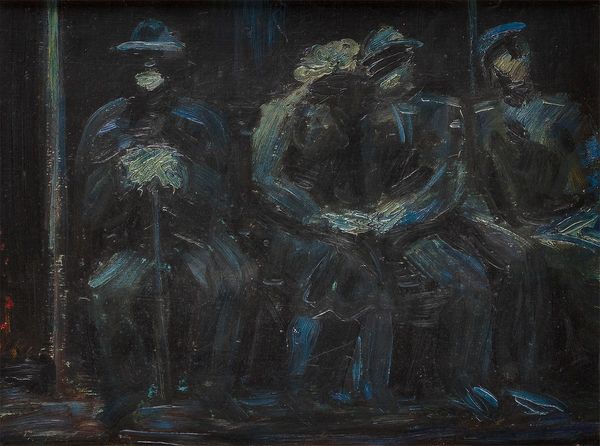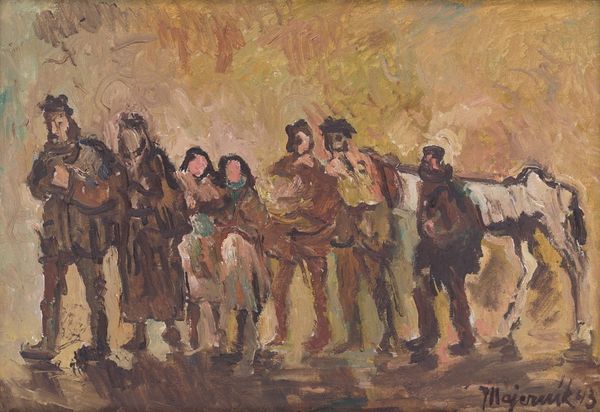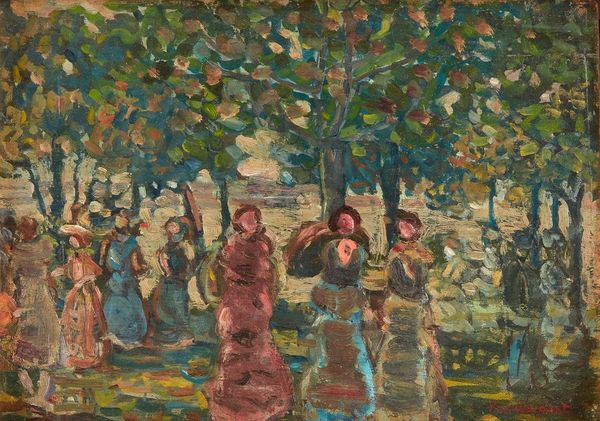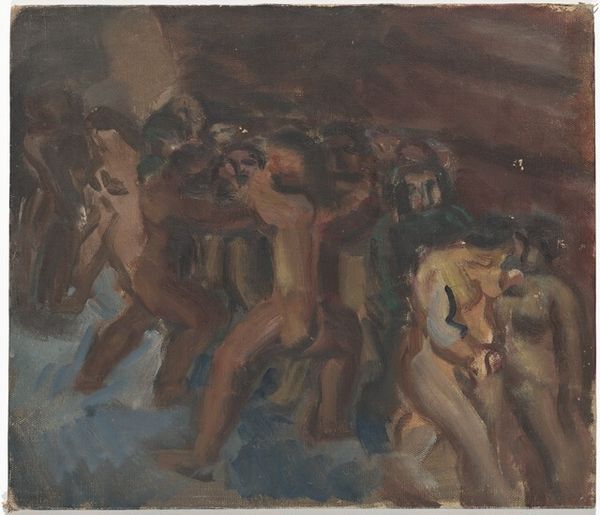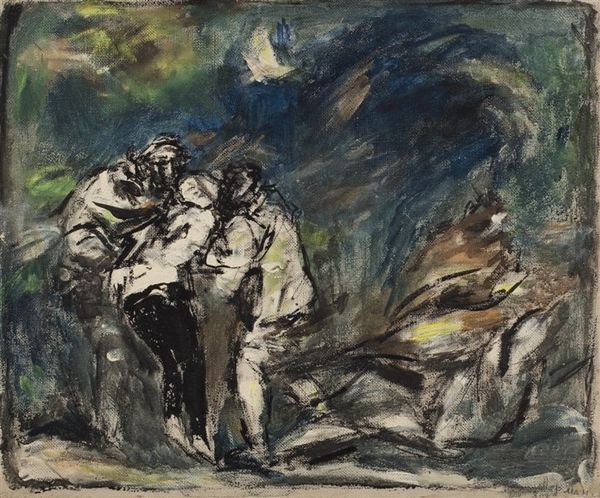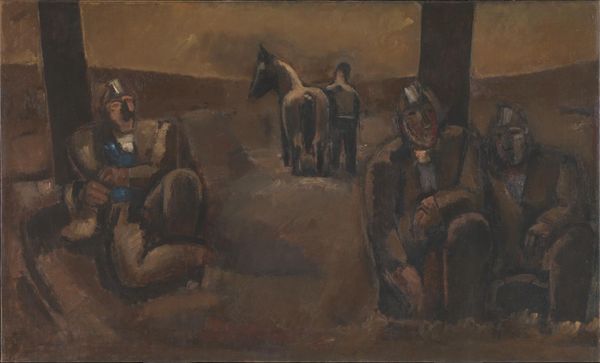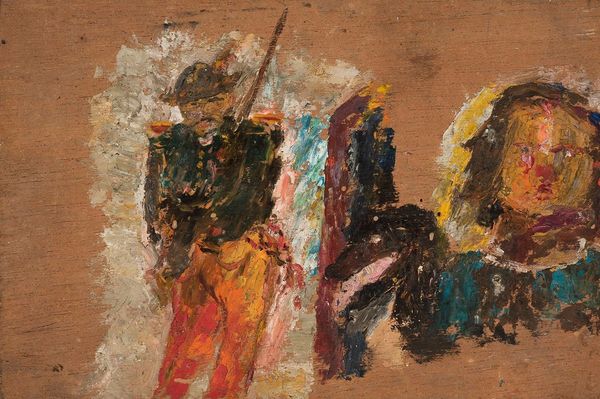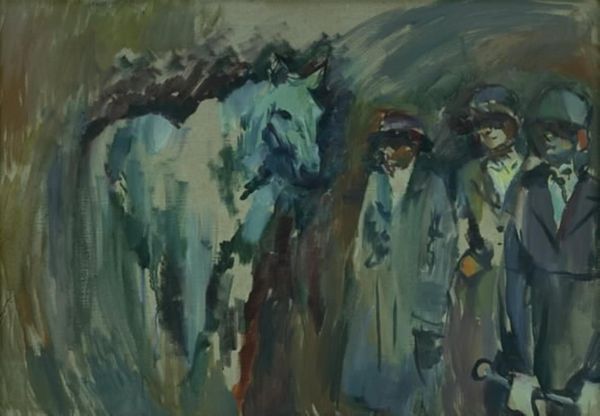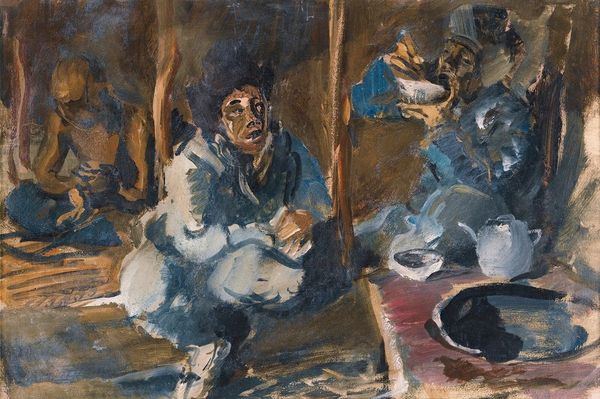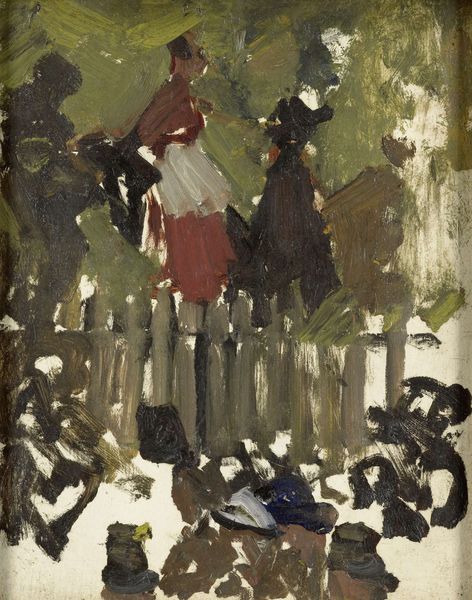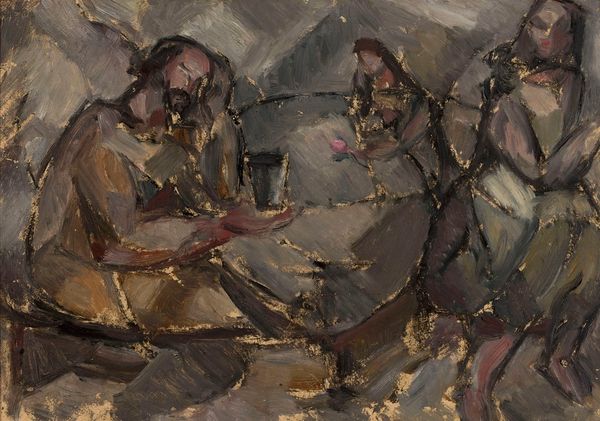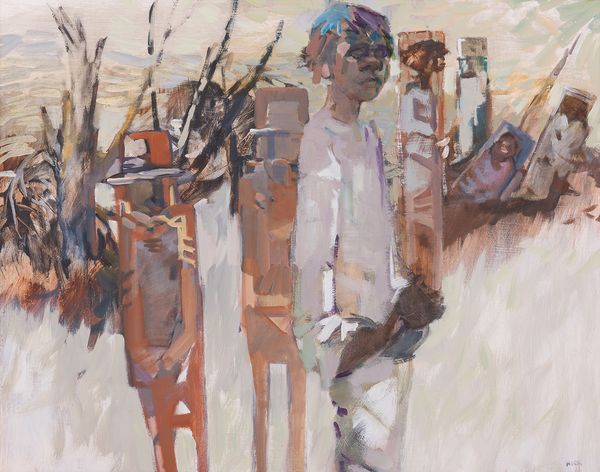
painting, oil-paint
#
painting
#
oil-paint
#
landscape
#
figuration
#
oil painting
#
genre-painting
#
modernism
Copyright: Julio Resende,Fair Use
Editor: This is an oil painting called "Untitled" by Julio Resende, created in 1954. The figures, rendered in shades of blue, give me a sense of melancholy and introspection. How do you interpret this work, particularly its use of color and figuration in the context of 1950s art? Curator: That's an insightful initial reaction. The somber color palette is certainly evocative. When considering Resende's work, I immediately think about the socio-political landscape of the time. 1954 was a period marked by post-war anxieties and the burgeoning Cold War. The faceless figures, almost like shadows, could represent a loss of individuality within oppressive regimes. How might this reading resonate with the prevalence of genre painting at the time? Editor: That's interesting. I hadn't considered the political context so directly. I was more focused on the artistic style, seeing it as a modern, simplified take on traditional landscape. Are you suggesting the landscape itself is secondary, more of a backdrop for social commentary? Curator: Not necessarily secondary, but inextricably linked. Landscape in the 1950s often served as a site for exploring themes of displacement, belonging, and national identity. Resende's choice to obscure the figures’ identities within this landscape might invite us to consider their relationship to the land, or their alienation from it. How might a feminist lens alter our view of these possibly male figures, especially in relation to power? Editor: I see what you mean. The anonymity allows for broader interpretations, even concerning gender dynamics within the period's social structures. So, it's less about what is literally depicted, and more about what the painting invites us to question about the human condition at the time? Curator: Precisely. It's about uncovering the layers of meaning embedded within the artwork and how they speak to broader cultural and political narratives. Art serves as a powerful form of cultural commentary. Editor: That's a really powerful perspective. Thanks, I will definitely look at art from that decade with new questions in mind. Curator: Glad to hear that! There are so many complex and diverse artistic and political dialogues to unpack when looking closely at the mid-20th century.
Comments
No comments
Be the first to comment and join the conversation on the ultimate creative platform.
